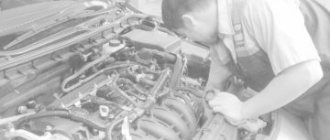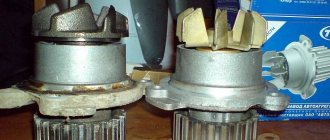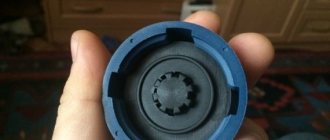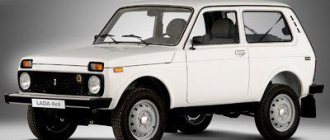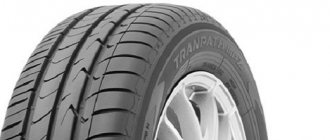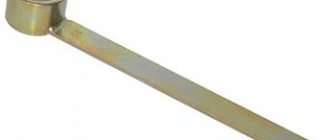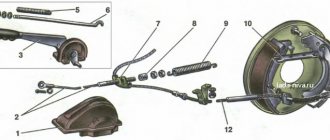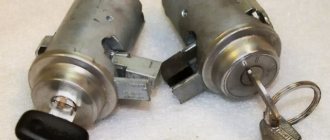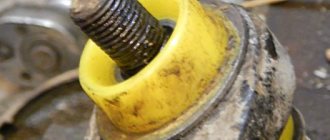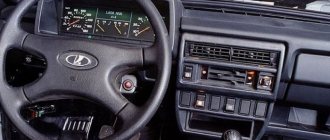Tuning options
When refining a Niva engine, a new crankshaft, cylinders and piston system are most often installed.
As a result, the car receives excellent speed characteristics and cross-country ability. There are two types of Niva engine tuning. The first includes chip tuning, and the second includes mechanical modification of the element. Chip tuning includes software upgrades, and is carried out only on new, fuel-injected SUVs. It includes flashing the control unit settings. It is performed by specialists quite quickly - within half an hour, but requires knowledge of software and additional electronic equipment.
Mechanical modifications are possible on any Niva, and this is the most popular type of tuning of a car’s power plant. With its help, you can significantly improve the technical characteristics of vehicles, and it is based on making some changes to the vehicle systems.
Main characteristics of internal combustion engine 21213
| Volume, cm 3 | 1690 |
| Main fuel: | gasoline AI-92 |
| Max. power, l. With. | 83 (at 5200 rpm) |
| Max. torque, Nm | 127 (at 3000 rpm) |
| Cylinder block configuration: | in one row |
| Number of cylinders | 4 |
| Number of valves | 8 |
| Max. speed, km/h | 153 |
| Acceleration time to 100 km/h, sec. | 17 |
| Combined fuel consumption | 11,5 |
| Econorm | Russia-83 |
| Cylinder diameter, mm | 82 with deviation up to 0.05 |
| Piston stroke, mm | 80 |
| Repair dimensions of pistons and cylinders, mm: | |
| first repair (marking on the piston - triangle, on the rings - 40) | 82.4 |
| second repair (marking on the piston - square, on the rings - 80) | 82.8 |
| Repair measurement of the diameter (for boring) of the crankshaft supports | 54.52 with deviation up to 0.013 |
| Compression ratio | 9,4 |
| Supply system | two-barrel carburetor |
| Cooling | liquid |
| Valve mechanism | SOHC |
| Cylinder block material | cast iron |
| Presence of liners in cylinders | not provided for by design |
| Head material | aluminum alloy |
| Resource before major overhaul, km | 80,000 (actual ≈ 120,000 km) |
| Number of bars | four |
| Cylinder operating order | 1-3-4-2 |
| Max. speed, rpm | 8000 |
| Weight, kg: | 117 |
Cylinder block of SUV Niva 21213
2.8.1. Device Features
Main dimensions of the connecting rod and piston group
Piston and connecting rod markings
Places where it is allowed to remove metal when adjusting the mass of the upper and lower connecting rod heads
The piston is cast aluminum. During manufacturing, the weight of the pistons is strictly maintained. Therefore, when assembling the engine, it is not necessary to select pistons of the same weight group.
According to the outer diameter, the pistons are divided into five classes (A, B, C, D, E) every 0.01 mm. The outer surface of the piston has a complex shape. It is conical in height and oval in cross section. Therefore, it is necessary to measure the piston diameter only in a plane perpendicular to the piston pin, at a distance of 55 mm from the piston bottom.
Based on the diameter of the hole for the piston pin, pistons are divided into three classes (1, 2, 3) every 0.004 mm. The classes of piston diameters and holes for the piston pin are marked on the bottom of the piston (see Fig. Marking of the piston and connecting rod).
Repair size pistons are manufactured with an outer diameter increased by 0.4 and 0.8 mm. The bottoms of these pistons are marked in the form of a triangle or square. The triangle corresponds to an increase in the outer diameter by 0.4 mm, and the square - by 0.8 mm.
The arrow on the piston crown shows how to properly orient the piston when installing it into the cylinder. It should be directed towards the camshaft drive.
The piston pin is steel, hollow, floating type, i.e. rotates freely in the piston bosses and connecting rod bushing. The pin is secured in the piston by two steel retaining rings.
According to the outer diameter, the fingers are divided into three classes every 0.004 mm. The class is marked with paint on the end of the finger: a blue mark is the first class, a green mark is the second class, and a red mark is the third class.
Piston rings are made of cast iron. The upper compression ring has a chrome-plated barrel-shaped outer surface. The lower compression ring is scraper type. Oil scraper ring - with chrome-plated working edges and with an expansion coil spring (expander).
Repair size rings are marked digitally “40” or “80”, which corresponds to an increase in the outer diameter by 0.4 or 0.8 mm.
Connecting rod – steel, forged. The connecting rod is processed together with the cover and therefore they are individually non-interchangeable. To avoid mixing up the caps and connecting rods during assembly, they are marked with number 6 (see Fig. Marking of the piston and connecting rod) of the cylinder in which they are installed. When assembling, the numbers on the connecting rod and cap should be on the same side.
A steel-bronze bushing is pressed into the upper head of the connecting rod. Based on the diameter of the hole in this bushing, the connecting rods are divided into three classes every 0.004 mm (the same as the pistons). The class 5 number is stamped on the upper head of the connecting rod.
Oil pump work
Due to the low engine efficiency and low wear resistance, mechanical tuning of the Niva 4x4 engine is almost mandatory. Such work is called work to change the geometry of the power plant. You should start modifying the power plant by upgrading the carburetor. We do the following:
- We change jets with an indicator of 1 kam to a jet with an indicator of 2 kam;
- Renewing the accelerator pump nozzle.
If there is dirt or carbon deposits in the carburetor, we clean it manually. To do this we need a rag, gasoline and physical strength. If the dirt is very stubborn, a high-pressure cleaner or other device designed for washing the car will help. You can also use special “baths” to remove dried dirt from parts. In this way, the fuel supply to the gas distribution mechanism can be significantly improved.
If you are the owner of an injection Niva, then independently modifying the injector is unacceptable. Only a professional with knowledge of software can perform such tuning of the Niva engine.
Lubricant supplied through the oil pump extends engine life. To improve the performance of the oil pump when tuning the Niva engine, you need to take another pump and cut off part of the housing with the parting plane from it. The thickness of this “pancake” should be about 11 cm. Using milling, cut off the excess and leave a thickness of 10 mm.
Next, do the following to remove chamfers on the edges of the teeth:
- We compress, that is, remove, the drive gears.
- We trim one of the gears by 0.75 mm on each side.
- We cut the second gear to 11.5 mm (after trimming).
- We repeat the operation with the remaining gears (driven).
Let's start working on the body. To do this we do the following:
- We release the driven gear axis from the housing.
- We form a longer axis from the drive roller.
- We insert the resulting axle into the body.
- We press the narrow gear onto the second drive shaft.
- Press on the wide gear.
- We fix the wide driven gear in the housing.
- We install a narrow gear into the housing.
This sequence will prevent the gears from turning relative to each other. You can also improve the oil receiver of the Vase by cutting it a centimeter from the bottom. After this, we adjust the end gap and connect the entire structure with bolts.
Repair dimensions of cylinders and pistons of the VAZ 21213 engine during major repairs
| Repair cylinder size, mm | Piston and cylinder class | Piston diameter, mm | Cylinder diameter after boring, mm | Cylinder diameter after honing, mm |
| 1 repair | ||||
| 82,4 | A | 82,34-82,35 | 82,37-82,38 | 82,40-82,41 |
| B | 82,35-82,36 | 82,38-82,39 | 82,41-82,42 | |
| C | 82,36-82,37 | 82,39-82,40 | 82,42-82,43 | |
| D | 82,37-82,38 | 82,40-82,41 | 82,43-82,44 | |
| E | 82,38-82,39 | 82,41-82,42 | 82,44-82,45 | |
| 2 repairs | ||||
| 82,8 | A | 82,74-82,75 | 82,77-82,78 | 82,80-82,81 |
| B | 82,75-82,76 | 82,78-82,79 | 82,81-82,82 | |
| C | 82,76-82,77 | 82,79-82,80 | 82,82-82,83 | |
| D | 82,77-82,78 | 82,80-82,81 | 82,83-82,84 | |
| E | 82,78-82,79 | 82,81-82,82 | 82,84-82,85 | |
Technical characteristics of the VAZ-21213 cylinder block
The cylinder block of the VAZ-21213 engine has the following dimensions:
| 1 – arrow for orienting the piston in the cylinder; 2 – repair size; 3 – piston class; 4 – hole class for piston pin; 5 – connecting rod class based on the hole for the piston pin; 6 – cylinder number | |||
| Marking color | |||
| top | bottom | ||
| 186 ± 2 | 519 ± 3 | A | White |
| 525 ± 3 | B | Blue | |
| 531 ± 3 | C | Red | |
| 190 ± 2 | 519 ± 3 | D | Black |
| 525 ± 3 | E | Violet | |
| 531 ± 3 | F | Green | |
| 194 ± 2 | 519 ± 3 | G | Yellow |
| 525 ± 3 | H | Brown | |
| 531 ± 3 | I | Orange |
| Size, mm | Maximum tolerance, mm | |
| Diameter of one cylinder | 82 | 0.05 mm |
| Block height (from the top plane to the crankshaft axis) | 214.58 | 0.15 |
| Intercylinder distance | 95 | – |
| Crankshaft support bore diameter | 54.52 | 0.013 |
Refinement of the gas distribution mechanism
After replacing the jets and accelerator pump, you can proceed to the second stage of tuning the VAZ-2121 engine. It includes modification of the gas distribution mechanism (GRM), namely, an increase in the diameter of the valves with their subsequent sealing. Such tuning of the Niva 2121 engine will increase the power of the power plant by almost ten percent.
It makes sense to replace the pusher (with a new one with a diameter of at least 1 mm) during the modification of the Niva engine. Work is being done to increase the pusher wells of the intake and exhaust channels. The result of such modification will be especially good for the Niva 4x4.
Subsequent work concerns the replacement of injectors and the control unit itself. Tuning the VAZ-2121 engine will be incomplete unless the standard crankshaft is replaced with an advanced modification, which will significantly increase the power of the power plant. This is due to the increase in piston stroke. It is also recommended to replace the piston rings with new ones.
Such tuning repairs are capable of:
- increase smoothness;
- reduce wear of parts;
- increase power.
ENGINE VAZ 21213-1000260
The engine is four-stroke, carburetor, in-line, with an overhead camshaft. The engine cooling system is liquid, closed type, with forced circulation of liquid. The engine has a combined lubrication system: pressure and splash.
The VAZ 21213 engine can be used for installation on VAZ Niva cars: 2121, 21213, 21214, 2131; "Nadezhda" 2120 and their modifications.
This internal combustion engine was developed specifically for the Niva VAZ-21213 car. Based on the center-to-center distance of the cylinders of 95 mm, it can be classified as a group of internal combustion engines installed on rear-wheel drive cars. They were located in the engine compartment along the axis of the car.
Engine cylinder block 21213-1002011 with a center-to-center distance of 95 mm and a height of 214.58-0.1 mm (distance from the axis of rotation of the crankshaft to the upper surface of the block). The nominal diameter of the cylinders is 82mm. TBO dimensions - 82.40 and 82.80. Five classes are defined based on the deviation of the cylinder diameter. The size of each class differs from the previous one by 0.01mm. Classes are designated by letters (A, B, C, D). The cylinder block is marked on the bottom surface of the block.
The engine is equipped with a crankshaft 21213-1005015. According to its parameters, it corresponds to the crankshaft 2103 and provides a piston stroke of 80 mm. (crank radius – 40mm.). The shaft has additional counterweights that reduce vibration. There are two oil supply holes on each crankpin. The diameters of the shaft journals are increased by 0.02 mm. When using standard bearings, this reduction in clearances optimizes the thickness of the oil layer between the shaft journal and the bearing surface. At the same time, reducing clearances improves the dynamic characteristics of the shaft. Crankshaft 21213 is recommended for installation instead of shaft 2103.
A new piston group has been developed for the engine. Piston 21213 is of original design; it has a specific oval hole on the bottom. For piston diameters, classes corresponding to cylinder classes are defined. The hole for the piston pin is 22mm in diameter. In the piston, the hole for the piston pin is offset by 1.2 mm from the piston axis. The piston class marking by diameter and pin hole size is indicated on the piston bottom. The piston pin, 67 mm long, is fixed in the piston with retaining rings. The weight of the piston is 347g. During manufacturing, all pistons are brought to the same weight.
Connecting rod 21213-1004045 has a new design. The length of the connecting rod is 136 mm. Hole sizes: for the connecting rod journal - 47.8 mm; piston pin – 22mm. New bolts were used to fasten the connecting rod cover, ensuring reliability and accuracy of assembly.
The cylinder head 21213-1002011 (for a 1.7-liter engine) is structurally similar to the 21011 head, but has a number of differences. The height of the head 21213 is 111.0mm, which is 1.8mm lower than the head 21011. The size of the combustion chamber is 81x52 mm, volume 30 cm3.
A new camshaft 21213-1006010 has been developed for the engine. The shape of the cams has been changed to increase the intake valve stroke. The valves and valve train from the 2101 engine are used.
The camshaft drive is chain. Double-row bush-roller chain mod. 2103. A new extended tensioner shoe is used.
Weaknesses of the VAZ 21213 power unit
- Water pump;
- Engine, manual transmission and transfer case oil seals;
- Generator;
- Starter;
- manual transmission;
- Valve cover gasket;
- Cooling system pipe connections;
- Radiator;
- Thermostat;
- Expansion tank;
- Vacuum brake booster.
The water pump (pump) is characterized by frequent failures on new cars after 2,000 km.
Due to poor quality, oil seals require more frequent replacement than required according to the operating manual.
Specifications
The Niva engine has high technical characteristics, and the car itself has increased cross-country ability, since there is a 4x4 option. Over the history of production, the VAZ 2121 has had different engine versions installed, from a carburetor version to an injector and even a diesel version.
So, let's look at the main characteristics of modifications to the Niva power unit:
VAZ 2121
| Name | Index |
| Engine capacity | 1.6 liter (1580 cc) |
| Number of cylinders | 4 |
| Number of valves | 8 |
| Fuel | Petrol |
| Injection system | Carburetor |
| Power | 80 horsepower |
| Fuel consumption | 12.2 l/100 km |
| Cylinder diameter | 79 mm |
| Valve mechanism | SOHC |
VAZ 21213
| Name | Index |
| Engine capacity | 1.7 liter (1690 cc) |
| Number of cylinders | 4 |
| Number of valves | 8 |
| Fuel | Petrol |
| Injection system | Carburetor |
| Power | 82 horsepower |
| Fuel consumption | 11.0 l/100 km |
| Cylinder diameter | 82 mm |
| Valve mechanism | SOHC |
VAZ 21214
| Name | Index |
| Engine capacity | 1.6 liter (1580 cc) |
| Number of cylinders | 4 |
| Number of valves | 8 |
| Fuel | Petrol |
| Injection system | Injector |
| Power | 83 horsepower |
| Fuel consumption | 8.4 l/100 km |
| Cylinder diameter | 82 mm |
| Econorm | EURO-4 |
| Valve mechanism | SOHC |
VAZ 2131
| Name | Index |
| Engine capacity | 1.8 liter (1779 cc) |
| Number of cylinders | 4 |
| Number of valves | 16 |
| Fuel | Petrol |
| Injection system | Injector |
| Power | 94 horsepower |
| Fuel consumption | 9.2 l/100 km |
| Cylinder diameter | 82 mm |
| Econorm | EURO-4 |
| Valve mechanism | SOHC |
Engine XUD9SD manufactured by Peugeot
| Name | Index |
| Motor type | Diesel |
| Engine capacity | 1.9 liter (1905 cc) |
| Number of cylinders | 4 |
| Number of valves | 8 |
| Fuel | Diesel fuel |
| Power | 75 horsepower |
| Fuel consumption | 7.1 l/100 km |
The power units of the VAZ 2121 were equipped with 4-speed manual and 5-speed manual transmissions.
Overhaul of the piston group
When the piston group units are produced, a major overhaul is carried out, which includes boring the cylinders to repair size, as well as subsequent honing of the cylinder walls. As a rule, major repairs are required after 120 thousand km.
There are ready-made repair kits, which, among other spare parts, include “repair size” pistons. The repair dimensions of VAZ 21213 pistons are 82.4 mm for the first size and 82.8 mm for the second. This is the diameter of the outer part of the piston itself, for which the cylinder is bored.
Since it is not possible to visually determine the diameter of such a piston, special markings are applied to them for this purpose. Since numbers can get lost and distort information, geometric shapes are used as repair markings: a triangle for the first size and a square for the second. They are placed next to the standard markings.
For such pistons, special rings of the appropriate “repair size” are used in the kit. Each ring is marked "40" or "80".
The engine is four-stroke, carburetor, in-line, with an overhead camshaft. The engine cooling system is liquid, closed type, with forced circulation of liquid. The engine has a combined lubrication system: pressure and splash. Number of cylinders: 4 Cylinder displacement, l: 1.69 Compression ratio: 9.3 Rated power at a crankshaft speed of 5200 rpm,: 58 kW.-(78.9 hp) Cylinder diameter, mm: 82 Piston stroke, mm: 80 Number of valves: 8 Minimum crankshaft rotation speed, rpm: 750-800 Maximum torque at 3400 rpm, N*m: 127 Cylinder operating order: 1-3-4-2 Gasoline octane number: 91-93 Fuel supply system: carburetor Spark plugs: A17DVR, BP6ES(NGK) Weight, kg: 117
Basics of overhaul
Engine overhauls, except for diesel engines, are carried out typically for all models of Lada power units. So, if you do not take into account the 2131 model with a 16-valve engine, then all versions have a timing chain instead of a belt.
Taking into account the design and manufacturer's manuals, the Niva has a low engine life compared to passenger versions of VAZ cars. So, on average, the mileage before major repairs will be 100-120 thousand km.
Therefore, in order not to spend extra money, many vehicle owners try to repair the engine on their own. Considering the weight of the engine, you will naturally need helpers, at least to remove the engine from the car.
So, what manipulations need to be performed to carry out a major overhaul of the power unit.
- Removing the engine from the car. To carry out this operation, you will need to disconnect all auxiliary systems and components.
- Disassembly and diagnostics of the motor. At this stage, the head, pan and valve cover are separated from the cylinder block. Also, you will have to remove the piston mechanism and crankshaft. Don't forget about disassembling the cylinder head.
- Next comes the process of boring the cylinder block, which is carried out on a special boring and honing wall. Also, the surface of the block is often polished.
The size of the piston group for VAZ 2121 engines with a standard piston size of 82 mm:
| Repair | Size |
| Standard | 82.0 mm |
| 1 | 82.5 mm |
| 2 | 83.0 mm |
| 3 | 83.5 mm |
| 4 or more | Block sleeve (installation of sleeves of standard size 82.0 mm) |
- Next, you need to grind the crankshaft to the appropriate size. Also, at this stage, the liners, both main and connecting rod, are tried on.
Technical characteristics of the VAZ-21213 cylinder block
The cylinder block of the VAZ-21213 engine has the following dimensions:
| Size, mm | Maximum tolerance, mm | |
| Diameter of one cylinder | 82 | 0.05 mm |
| Block height (from the top plane to the crankshaft axis) | 214.58 | 0.15 |
| Intercylinder distance | 95 | — |
| Crankshaft support bore diameter | 54.52 | 0.013 |
For pistons, standard alphanumeric markings are used with the designation of the size group (A-E), the class of diameter of the hole for the piston pin (from 1 to 3), as well as an arrow - it indicates the direction to the front of the engine.
Engine tuning
Tuning a VAZ 2121 engine is an art. Since the car has the characteristics of an SUV, the engine is tuned accordingly. The air filter duct is installed as high as possible, and the motor from below is protected by a special tray, the purpose of which is not to allow water to pass through.
So, the modification of the Niva’s power unit is designed to increase cross-country ability and traction capabilities, since the vehicle is mainly designed for operation on rough terrain. So, many car enthusiasts bore the power unit in such a way as to add not only horsepower, but also traction.
As practice shows, tuning of VAZ 2121 engines and its modifications is carried out by tuning studios that are well versed in which unit needs to be modified.
Also, in the process of refinement, the ignition system and fuel injection are being modernized. For carburetor engines, an additional carburetor can be installed to increase the amount of fuel entering the combustion chamber.
For injection versions of engines, chip tuning is carried out, which can be aimed at increasing power or the balance between consumption and traction capabilities. Many car enthusiasts install additional sensors that help control the operation of the power unit.


